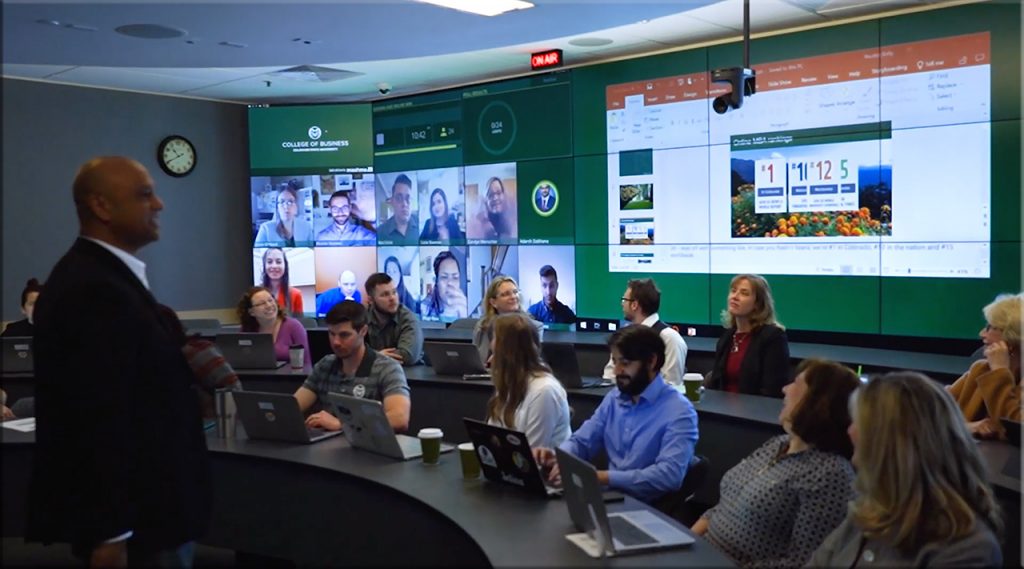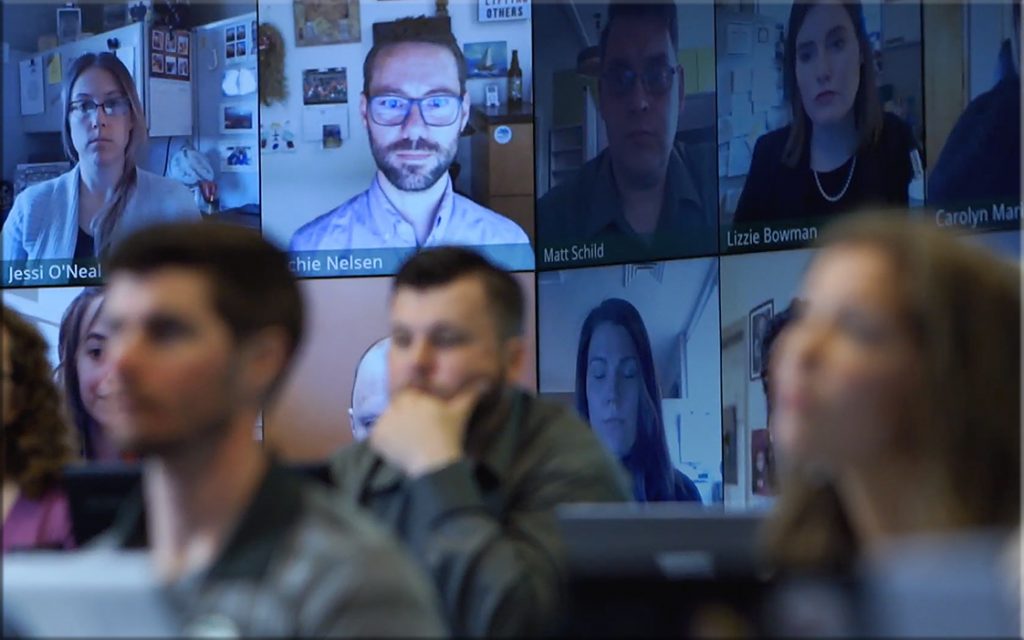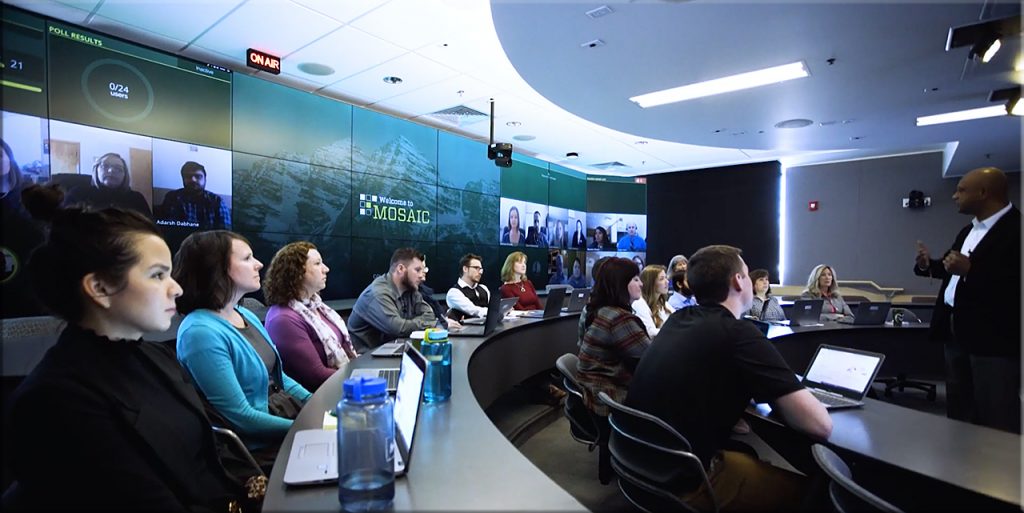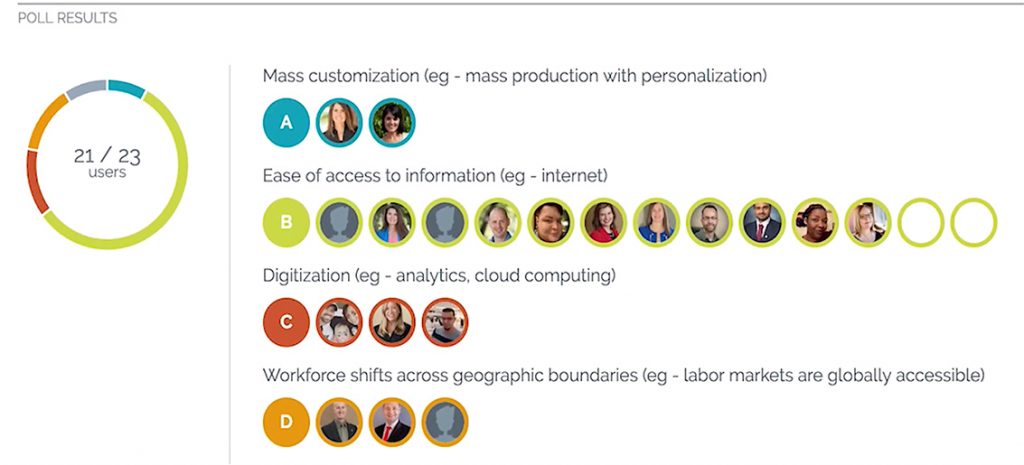DC: Likely a piece of our future learning ecosystems… #AI #LearningEcosystems #Learning #LifelongLearning #Platforms https://t.co/rIISC4BQ8b via @YouTube
— Daniel Christian (@dchristian5) July 5, 2019




DC: Likely a piece of our future learning ecosystems… #AI #LearningEcosystems #Learning #LifelongLearning #Platforms https://t.co/rIISC4BQ8b via @YouTube
— Daniel Christian (@dchristian5) July 5, 2019
Meet Anthony Johnson: Teacher of the Year. Rebel ‘Mayor.’ High School Dropout. — from edsurge.com by Kristin Leong
Excerpt:
Anthony’s classroom is as much an invitation to his students to take ownership of their learning as it is a rebellion against the education system that failed him when he was a student. In his book, “High School Dropout to Teacher of the Year,” Anthony’s complicated relationship to education comes through as the fuel behind his work. In explaining his motivations behind reinventing classroom learning, he says that his focus as a teacher is to provide students with learning experiences that are “radically different” from the ones he remembers.
From the description of his book:
What makes Anthony Johnson a gem is not the fact that he is an African American male, but that he cultivates and fosters a learning environment unlike any other seen in this country.
A growing repository of useful design tools, from accessibility and AR to wireframing and 3D modeling software.
? Awesome Design Toolshttps://t.co/qo5wAU9D4d pic.twitter.com/THIYPLmH0c
— Smashing Magazine (@smashingmag) April 10, 2019
The finalized 2019 Horizon Report Higher Education Edition (from library.educause.edu) was just released on 4/23/19.
Excerpt:
Key Trends Accelerating Technology Adoption in Higher Education:
Short-Term—Driving technology adoption in higher education for the next one to two years
Mid-Term—Driving technology adoption in higher education for the next three to five years
Long-Term—Driving technology adoption in higher education for five or more years
Minerva’s Innovative Platform Makes Quality Higher Ed Personal and Affordable — from linkedin.com by Tom Vander Ark
Excerpt:
The first external partner, the Hong Kong University of Science and Technology (HKUST), loved the course design and platform but told Nelson they couldn’t afford to teach 15 students at a time. The Minerva team realized that to be applicable at major universities, active learning needed to be scalable.
Starting this summer, a new version of Forum will be available for classes of up to 400 at a time. For students, it will still feel like a small seminar. They’ll see the professor, themselves, and a dozen other students. Forum will manage the movement of students from screen to screen. “Everybody thinks they are in the main room,” said Nelson.
…
Forum enables real-time polling and helps professors create and manage breakout groups.
…
Big Implications
With Forum, “For the first time you can deliver better than Ivy League education at absurdly low cost,” said Nelson.
Online courses and MOOCs just repackaged the same format and just offered it with less interaction. As new Forum partners will demonstrate, “It’s possible to deliver a year of undergraduate education that is vastly superior for under $5,000 per student,” added Nelson.
He’s excited to offer a turnkey university solution that, for partners like Oxford Teachers Academy, will allow new degree pathways for paraprofessionals that can work, learn, and earn a degree and certification.
Perhaps another piece of the puzzle is falling into place…
The Growing Profile of Non-Degree Credentials: Diving Deeper into ‘Education Credentials Come of Age’ — from evolllution.com by Sean Gallagher
Higher education is entering a “golden age” of lifelong learning and that will mean a spike in demand for credentials. If postsecondary institutions want to compete in a crowded market, they need to change fast.
Excerpts (emphasis DSC):
One of the first levels of opportunity is simply embedding the skills that are demanded in the job market into educational programs. Education certainly has its own merits independent of professional outcomes. But critics of higher education who suggest graduates aren’t prepared for the workforce have a point in terms of the opportunity for greater job market alignment, and less of an “ivory tower” mentality at many institutions. Importantly, this does not mean that there isn’t value in the liberal arts and in broader ways of thinking—problem solving, leadership, critical thinking, analysis, and writing are among the very top skills demanded by employers across all educational levels. These are foundational and independent of technical skills.
The second opportunity is building an ecosystem for better documentation and sharing of skills—in a sense what investor Ryan Craig has termed a “competency marketplace.” Employers’ reliance on college degrees as relatively blunt signals of skill and ability is partly driven by the fact that there aren’t many strong alternatives. Technology—and the growth of platforms like LinkedIn, ePortfolios and online assessments—is changing the game. One example is digital badges, which were originally often positioned as substitutes to degrees or certificates.
Instead, I believe digital badges are a supplement to degrees and we’re increasingly seeing badges—short microcredentials that discretely and digitally document competency—woven into degree programs, from the community college to the graduate degree level.
However, it is becoming increasingly clear that the market is demanding more “agile” and shorter-form approaches to education. Many institutions are making this a strategic priority, especially as we read the evolution of trends in the global job market and soon enter the 2020s.
Online education—which in all its forms continues to slowly and steadily grow its market share in terms of all higher ed instruction—is certainly an enabler of this vision, given what we know about pedagogy and the ability to digitally document outcomes.
In addition, 64 percent of the HR leaders we surveyed said that the need for ongoing lifelong learning will demand higher levels of education and more credentials in the future.
Along these lines of online-based collaboration and learning,
go to the 34 minute mark of this video:
From DSC:
The various pieces are coming together to build the next generation learning platform. Although no one has all of the pieces yet, the needs/trends/signals are definitely there.
Addendums on 4/20/19:
DC: The larger 85” model could be interesting to use in smaller classrooms that bring face-to-face students on campus w/ remote students. https://t.co/c2lvG2VoM3
— Daniel Christian (@dchristian5) April 19, 2019
From DSC:
First a posting that got me to wondering about something that I’ve previously wondered about from time to time…
College of Business unveils classroom of the future — from biz.source.colostate.edu by Joe Giordano
Excerpt:
Equipped with a wall of 27 high-definition video screens as well as five high-end cameras, the newest classroom in Colorado State University’s College of Business is designed to connect on-campus and online students in a whole new way.
The College of Business unveiled on March 29 the “Room of the Future,” featuring Mosaic, an innovative technology – powered by mashme.io – that creates a blended classroom experience, connecting on-campus and online students in real time.
From DSC:
If the pedagogies could be worked out, this could be a very attractive model for many people in the future as it:
If the resulting increase in students could bring down the price of offering the course, will we see this model flourish in the near future?
For struggling colleges and universities, could this help increase the ROI of offering their classes on their physical campuses?
The technologies behind this are not cheap though…and that could be a show-stopper for this type of an experiment. But…thinking out loud again…what if there were a cheaper way to view a group of other people in your learning community? Perhaps there will be a solution using some form of Extended Reality (XR)…hmmm….






Also see:
Also see:
The Changing Landscape of Online Education, 2019 is now available — from qualitymatters.org
This report is the continuation of a multi-year study by QM and Eduventures to examine the changing landscape of online education, provide results to those who can use them and help those involved with online education place their institution within a broader context and possibly influence strategic decisions and organizational changes. Please complete the form on this page to gain access to the 2019 CHLOE 3 Report.
CHLOE 3 breaks new ground in identifying a number of different institutional approaches to online learning, as crystallized in the descriptions of five models (e.g. Enterprise Schools, Community Colleges). Major themes in CHLOE 3 include a more complete picture of the growth, prevalence, and scope of the Chief Online Officer position; the emergence of online committees and councils as a component of institutional shared governance; associations between online course structure, student engagement and outcomes; and the widespread neglect of coordinated blended learning.
Examples/excerpts:
From a fairly recent e-newsletter from edsurge.com — though I don’t recall the exact date (emphasis DSC):
New England is home to some of the most famous universities in the world. But the region has also become ground zero for the demographic shifts that promise to disrupt higher education.
This week saw two developments that fit the narrative. On Monday, Southern Vermont College announced that it would shut its doors, becoming the latest small rural private college to do so. Later that same day, the University of Massachusetts said it would start a new online college aimed at a national audience, noting that it expects campus enrollments to erode as the number of traditional college-age students declines in the coming years.
“Make no mistake—this is an existential threat to entire sectors of higher education,” said UMass president Marty Meehan in announcing the online effort.
The approach seems to parallel the U.S. retail sector, where, as a New York Times piece outlines this week, stores like Target and WalMart have thrived by building online strategies aimed at competing with Amazon, while stores like Gap and Payless, which did little to move online, are closing stores. Of course, college is not like any other product or service, and plenty of campuses are touting the richness of the experience that students get by actually coming to a campus. And it’s not clear how many colleges can grow online to a scale that makes their investments pay off.
“It’s predicted that over the next several years, four to five major national players with strong regional footholds will be established. We intend to be one of them.”
University of Massachusetts President Marty Meehan
From DSC:
That last quote from UMass President Marty Meehan made me reflect upon the idea of having one or more enormous entities that will provide “higher education” in the future. I wonder if things will turn out to be that we’ll have more lifelong learning providers and platforms in the future — with the idea of a 60-year curriculum being an interesting idea that may come into fruition.
Long have I predicted that such an enormous entity would come to pass. Back in 2008, I named it the Forthcoming Walmart of Education. But then as the years went by, I got bumbed out on some things that Walmart was doing, and re-branded it the Forthcoming Amazon.com of Higher Education. We’ll see how long that updated title lasts — but you get the point. In fact, the point aligns very nicely with what futurist Thomas Frey has been predicting for years as well:
“I’ve been predicting that by 2030 the largest company on the internet is going to be an education-based company that we haven’t heard of yet,” Frey, the senior futurist at the DaVinci Institute think tank, tells Business Insider. (source)
I realize that education doesn’t always scale well…but I’m thinking that how people learn in the future may be different than how we did things in the past…communities of practice comes to mind…as does new forms of credentialing…as does cloud-based learner profiles…as does the need for highly efficient, cost-effective, and constant opportunities/means to reinvent oneself.
Also see:
Addendum:
74% of consumers go to Amazon when they’re ready to buy something. That should be keeping retailers up at night. — from cnbc.com
Key points (emphasis DSC)
“In New England, there will be between 32,000 and 54,000 fewer college-aged students just seven years from now,” Meehan said. “That means colleges and universities will have too much capacity and not enough demand at a time when the economic model in higher education is already straining under its own weight.” (Marty Meehan at WBUR)
Huge study finds professors’ attitudes affect students’ grades — and it’s doubly true for minority students. — from arstechnica.com by Scott Johnson
Excerpt:
Instead, the researchers think the data suggests that—in any number of small ways—instructors who think their students’ intelligence is fixed don’t keep their students as motivated, and perhaps don’t focus as much on teaching techniques that can encourage growth. And while this affects all students, it seems to have an extra impact on underrepresented minority students.
The good news, the researchers say, is that instructors can be persuaded to adopt more of a growth mindset in their teaching through a little education of their own. That small attitude adjustment could make them a more effective teacher, to the significant benefit of a large number of students.
Along these lines, also see:
4 key tech strategies for the survival of the small liberal arts college — from campustechnology.com by Kellie B. Campbell
In a recent study on the use of technology to reduce academic costs in liberal arts colleges, four distinct themes emerged: the strategic role of IT; the importance of data; the potential of alternative education delivery modes; and opportunities for institutional partnerships. Here’s how IT leaders at these small colleges understand the future of their institutions.
Excerpt:
In this study, the flexibility of the semi-constructed interview format resulted in a fascinating level of honesty and bluntness from participants. In particular, participants’ language changed when they were asked to take off their professional hat and consider a new point of view — it was a chance to be vulnerable and honest. What was probably most interesting was that almost everyone signaled that the status quo is not sustainable. Something in the higher education model has to change for institutions to stay open, yet many lack a strategy for effecting change. Even if they do have a strategy in place on the business side, many are hesitant to dive into analysis and change on the academic side of the institution.
Institutions simply cannot continue to nibble at the edges of change. Significant change is needed in order to sustain the financial model of higher education. The ideas for doing so are out there, though the work must be guided by the institutional mission and consider new models for delivering education. CIOs and their departments can play an important role in that work — providing infrastructure, data, access, services and ideas — but institutional leadership at large needs to understand IT’s strategic role and position the organization to make that impact.
When participants were able to think about the “what if” question — what if the institution were forced to drastically cut academic costs — several had detailed, “out there” ideas that might not be traditionally welcomed into higher education cultures. Yet a number of participants were not being asked by their institutions to think about such ideas. The question is, if everyone agrees that the status quo is not sustainable, why aren’t they thinking about it?
The information below is from Deb Molfetta, Outreach Coordinator at EdDPrograms.org
EdDPrograms.org helps educators and administrators research doctoral education opportunities. Their organization’s work in education began in 2008 with projects ranging from a new teacher survival guide to their own teacher education scholarship program. More recently they realized that there weren’t any websites dedicated to professional development through Doctor of Education (EdD) programs, which is why they created their own – EdDPrograms.org. It covers a lot of ground, but here are a few sections they think administrators will appreciate:
EdDPrograms.org is owned and operated by a group that has been creating post-secondary education resources since 2008. According to Deb, they have a history of providing students with objective, fact-based resources.
From DSC:
In a next generation learning system, it would be sharp/beneficial to have a Netflix-like interface to check out potential functionalities that you could turn on and off (at will) — as one component of your learning ecosystem that could feature a setup located in your living room or office.
For example, put a Netflix-like interface to the apps out at eduappcenter.com (i.e., using a rolling interface at first, then going to a static page/listing of apps…again…similar to Netflix).
Provosts count more on online programs — from insidehighered.com by Doug Lederman
More say they will increase emphasis on and allocate “major funds” to online offerings. Survey also finds solid but not spectacular support for open educational resources, and that backing for competency-based programs is more philosophical than practical.
Excerpt:
Increasing numbers of college and university chief academic officers plan to expand their online offerings and make major allocations of funds to online programs, a new survey by Inside Higher Ed shows.
The 2019 Survey of College and University Chief Academic Officers, published today by Inside Higher Ed in conjunction with Gallup, finds that 83 percent of provosts say they will increase their emphasis on expanding online programs and offerings. That figure has edged up slightly in recent years, from 79 percent in 2016.
A more significant rise has occurred in the proportion of academic officers anticipating a “major allocation of funds” to online programs. The survey asks provosts to assess the likelihood of increased funds to several categories of programs, including professional programs, STEM fields and the arts and sciences. As seen in the chart below, the share of provosts agreeing or strongly agreeing they would allocate major funds to online programs has grown to 56 percent this year from 46 percent four years earlier.